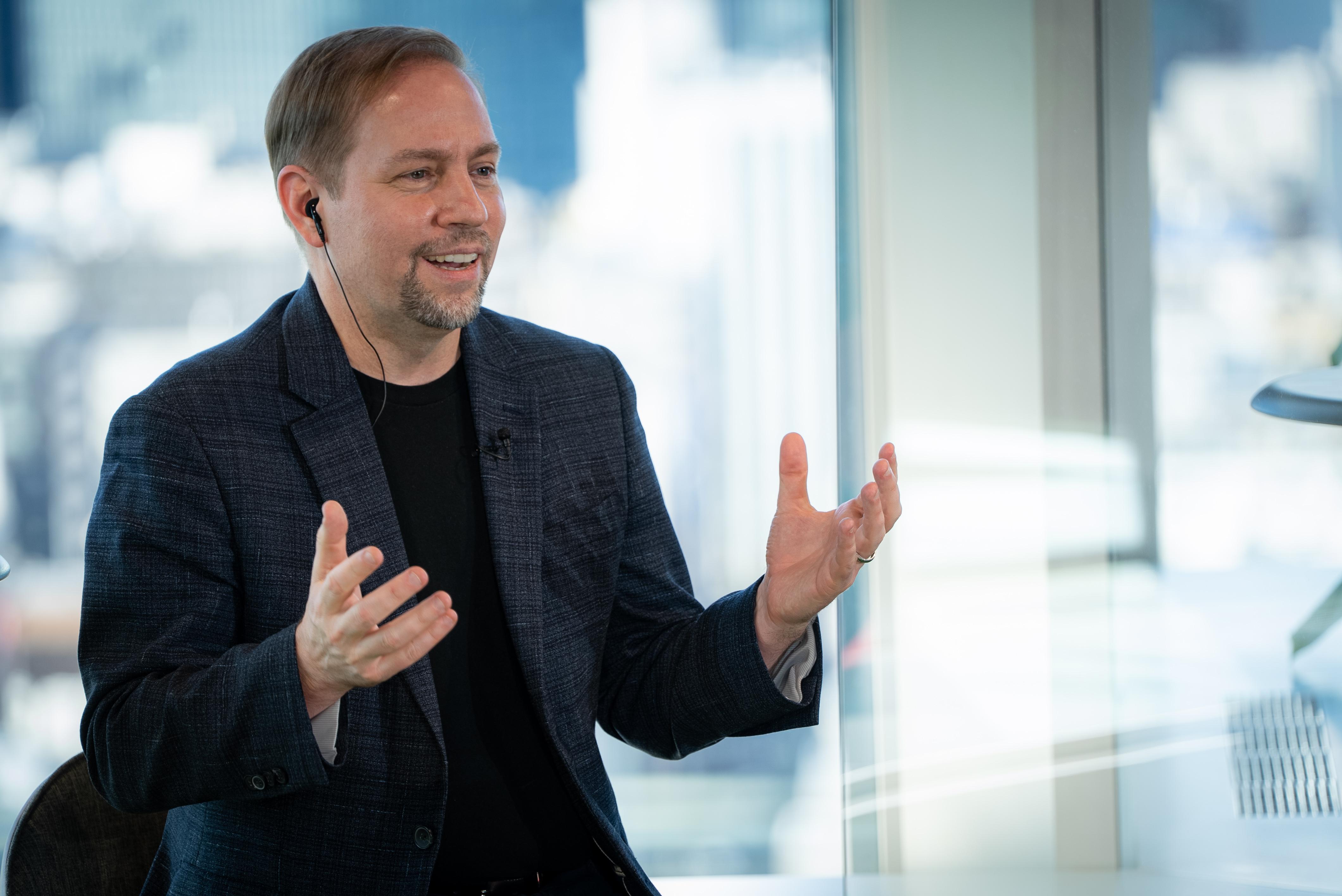
Chief Digital Officer James Kuffner shared his thoughts, at an internal meeting, on the challenge to achieve carbon neutrality. What does he mean when he says "practicality and sustainability is the key"?

Carbon neutrality is becoming one of the world’s most passionately debated topics.
Along with emphasizing the necessity of governmental energy-policy reform in achieving carbon neutrality as a society, Akio Toyoda, as chairman of the Japan Automobile Manufacturers Association, has shared his view that the Japanese automotive industry must leverage its full lineup of electrified vehicles, from hybrid vehicles (HEVs), plug-in hybrid vehicles (PHEVs), and battery electric vehicles (BEVs), to fuel cell electric vehicles (FCEVs).
Despite Akio’s earnest explanation, Toyota continues to be criticized for purportedly not being committed enough to achieving carbon neutrality or for being reluctant to jump on the BEV bandwagon.
But the fact is that Toyota management, while closely monitoring discussions and reactions in the world about carbon neutrality, frequently discusses at executive meetings how to move forward.
Earlier this month, the Toyota Times editorial team was given the privilege of listening in at an executive meeting to understand what kind of discussions are taking place inside Toyota. Many comments were made on carbon neutrality during the meeting, and one highlight was Chief Digital Officer James Kuffner’s emphasis on the key point of how to face the challenge.
Since the discussion represented the philosophy of Toyota’s future strategy, Toyota Times has decided to share part of it with its readers.

The goal: carbon neutrality and sustainability
Kuffner’s role as the chief digital officer is described at Toyota as being “to promote software development and market introduction of software products.”
At one glance, although his role might seem unrelated to carbon neutrality, Kuffner is also responsible for leading the Woven City project, Toyota’s initiative to develop a prototype city of the future. At Woven City, various future technologies and services that Toyota is working on will be tested and demonstrated for further improvement.
In designing the future, carbon neutrality is something one cannot evade facing. Kuffner shared his thinking as follows:
Chief Digital Officer: James Kuffner
I get the impression that the carbon neutrality being discussed in the automotive industry now is more or less about which technology prevails over others, like whether the mainstream powertrain will be BEVs, HEVs, PHEVs, or FCEVs.
One thing that is very important is that new technology is needed to realize carbon neutrality, and with that in mind, there is no doubt that BEVs will play an important role there.
But we need to remember that the real goal is sustainability and carbon neutrality, not to change all vehicles to BEVs.
Toyota is often seen as an automaker that persistently stresses the viability of HEVs but shows reluctance when it comes to BEVs. But judging from Kuffner’s comment, it is apparent that Toyota does value BEVs as one solution just like other manufacturers. Kuffner went on to talk about the challenges that BEVs present, while touching on the world energy situation.
Unfortunately, 80 percent of the world’s grid is coming from non-renewable energy right now. Charging a BEV by burning coal doesn’t help realize carbon neutrality. That’s why the big picture matters, and as a company, we need to promote such understandings.
A lot of people focus on the carbon emissions of all the vehicles running, but they forget about how vehicles are actually manufactured in their life cycle.
Recently, more people have pointed to the amount of CO2 emissions in the manufacturing of batteries, but even before manufacturing, mining lithium, for example, emits a large amount of carbon.
Kuffner’s point was that energy policy and product life cycle evaluation are key to achieving true zero-emission BEVs.
Practicality—the basis for expansion
As an executive who has unique experience and perspectives, Kuffner explained his view on how Toyota should tackle this challenge.
Electrification has always been a technology investment area for Toyota. In fact, nobody has brought more electrified vehicles to market than Toyota.
Toyota has invested in PHEVs and FCEVs and offered practical choices to customers as a bridge while battery technology is getting improved. We will introduce more BEVs than ever going forward.
As shown in Toyota’s history, innovation doesn’t have any impact if it isn’t practical.
As Kuffner explained earlier, “BEVs or other electrified vehicles” is simply a discussion on which powertrain is suitable in certain cases. In fact, customers consider various points when deciding what car to buy.
Although it might not have earned much public attention, Toyota introduced a BEV based on the RAV4 in 1996 and developed another one with Tesla in 2012.
As early as January 2012, Toyota introduced a mass-production PHEV (in the form of the Prius PHEV) as well, but the vehicle didn’t succeed in becoming a choice for as many people as expected. In short, these vehicles were not a practical choice for customers at the time.
Not all customers can be satisfied or won’t have all their requirements met with a one-size-fits-all solution. That’s why a full menu and flexibility are important parts of our strategy for trying to listen to the voices of our customers. That really means addressing all the regional needs as well.
I’m very optimistic that BEVs are going to be a huge part of the sustainable future of transportation. No question. The question is how fast and how many customers will choose them, how the infrastructure will change, and how we can close the technology gap.
The human-centered approach
The key words in Kuffner’s comments were “practical and sustainable.”
In his view, HEVs are one solution firmly established through Toyota’s history of listening to and understanding the practical needs of its customers.
The underlying philosophy of what Kuffner emphasized was how to be “human-centered” in creating the future, as Akio often touches on.
The setting of a goal to become carbon neutral by 2050 has given everyone a clear image of where we should all head, but the path to getting there remains unclear, as many approaches are being debated, with some of them already being made less valid due to changing situations. But, as discussed at the Toyota executive meeting, one thing that will never change down the road is the importance of truly facing reality and understanding customers.
Toyota’s stance is not about being conservative but about making a genuine effort for the future and next generation. That was the impression of the Toyota Times editorial team. What specific actions are under planning based on a “practical and sustainable” approach? That is what Toyota Times intends to find out moving forward.

